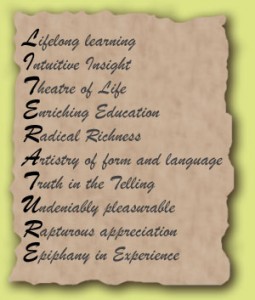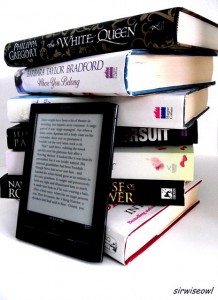 At the end of this module, I will know more about:
At the end of this module, I will know more about:
-
the learning strategies my students use in this module;
-
why they choose these strategies;
-
how my students approach particular activities, such as reading set texts.
All of my previous posts, and all of the work undertaken in the ‘Learning Outcomes Project’ so far, has concerned investigating the learning outcomes (LOs) approach as it applies to students. This is sensible of course given that LOs are supposedly statements of what students will know, understand and be able to do at the end of a learning experience. A few days ago, however, I was involved in a teaching session that made me realise the extremely valuable benefits that might arise for teachers setting some LOs for themselves based on what they would like to understand more about how their students go about learning.
The session that has made me think about this was a third year English seminar. The leader of this module (and the seminar tutor) is involved in various research activities exploring, from an anthropological perspective, what students do during their independent study time – how, effectively, do they go about learning during this time which is specifically free from tutor contact and their own to direct their learning as they see appropriate?
The tutor and I are collaborating on particular aspects of this work, which led me to pop into one of his seminars when he was planning to briefly chat to his students about the independent learning activities that they had engaged in that week. We made it very clear to the students that they were in no way being judged for what they had or had not done. Instead, we wanted to get a better understanding about how they were actually approaching their learning on this particular module. This discussion proved very insightful for myself and my colleague in a number of ways and it opened our eyes to the wider landscape that is student learning. Two of the most insightful revelations were:
-
The most seemingly straightforward activity can be approached and completed by students in a multitude of ways.
Each student approached the reading of the set text for the week in very different ways. The set text was a particular novel and, of all the module activities, this would have seemed the easiest to predict, i.e. students will pick up the set text and read it. But no. First, there were variations in whether students read a physical copy of the book or read it on an iPad or other type of e-reader. Then there were differences in how students started to read it. Some went straight to reading the novel, wanting to discover it first for themselves and develop their own initial thoughts about it. Others choose to read about the plot and find some reviews of the novel on the internet first (usually on wikipedia) to have some sort of framework within which to read the novel. Then, when it came to capturing their thoughts or relevant points as they read, some choose to write notes within the physical copy of the book, some wrote notes in separate notebooks, some made notes electronically or on their electronic version, some took page shots of particular sections they wanted to remember rather than writing notes and some took no notes at all.
-
Students may benefit by sharing ‘good learning practices’.
A couple of times I saw a spark of ‘that’s a good idea’ in students as they heard how others approached reading the text or taking notes. One student particularly liked another’s approach of taking pictures on his phone of pertinent sections or pages of the text.
I only refer to two very brief examples here, but after this session my colleague and I were very surprised by the variation we had heard concerning how students approach the relatively straightforward task of reading the set text. If this one activity can involve a myriad of approaches, imagine what further investigations of other module activities might reveal. And this is where my thoughts about LOs for teachers come in. Insight such as this is extremely valuable to the teacher. For example, in relation to our English students, awareness of the different approaches taken may help the tutor to know why some students can engage earlier in critical discussions of the text than others (i.e. those that have read reviews first rather than those who prefer to read the whole text ‘cleanly’ and then explore critiques and reviews). The tutor could then think about when in the module it would be most effective to schedule the critical discussions so that all students can engage and benefit.
Please do not misunderstand me here. I am not advocating formal LOs for teachers to set for themselves. But I think it would be useful for teachers to think not only in terms of what students should know and understand at the end of the module, but what they, as teachers of that module, should know and understand about how their learners have gone about learning the content of that module. It also does not need to be a big research project or a very time-consuming activity – just a couple of in-class discussions can to some very insightful and revelatory understandings.





 Subscribe to Kerry Dobbins's posts
Subscribe to Kerry Dobbins's posts
Hi Kerry,
“my colleague and I were very surprised by the variation we had heard concerning how students approach the relatively straightforward task of reading the set text.”
This reminds me of Jo Boaler’s work on maths. I saw a video where students were asked a question such as 22 x 12, and then they would explain how they calculated it so others could learn from their techniques and mistakes. They found what you found – there’s a huge range of ways to tackle even seemingly straightforward tasks.